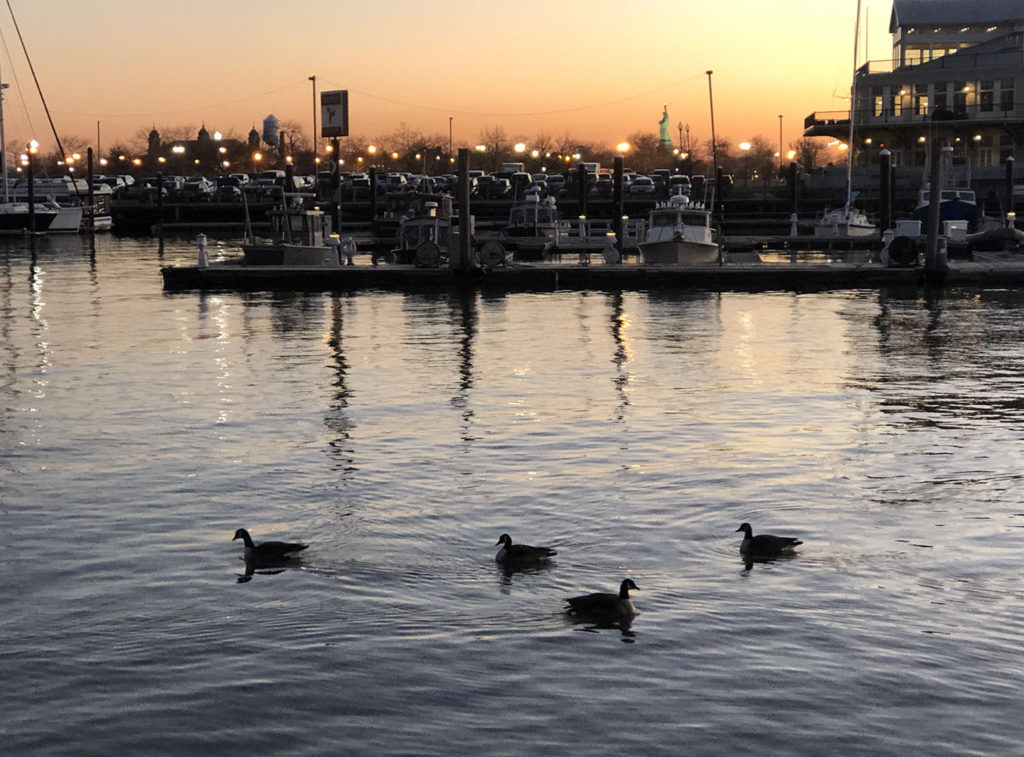A staycation with the best view of New York City
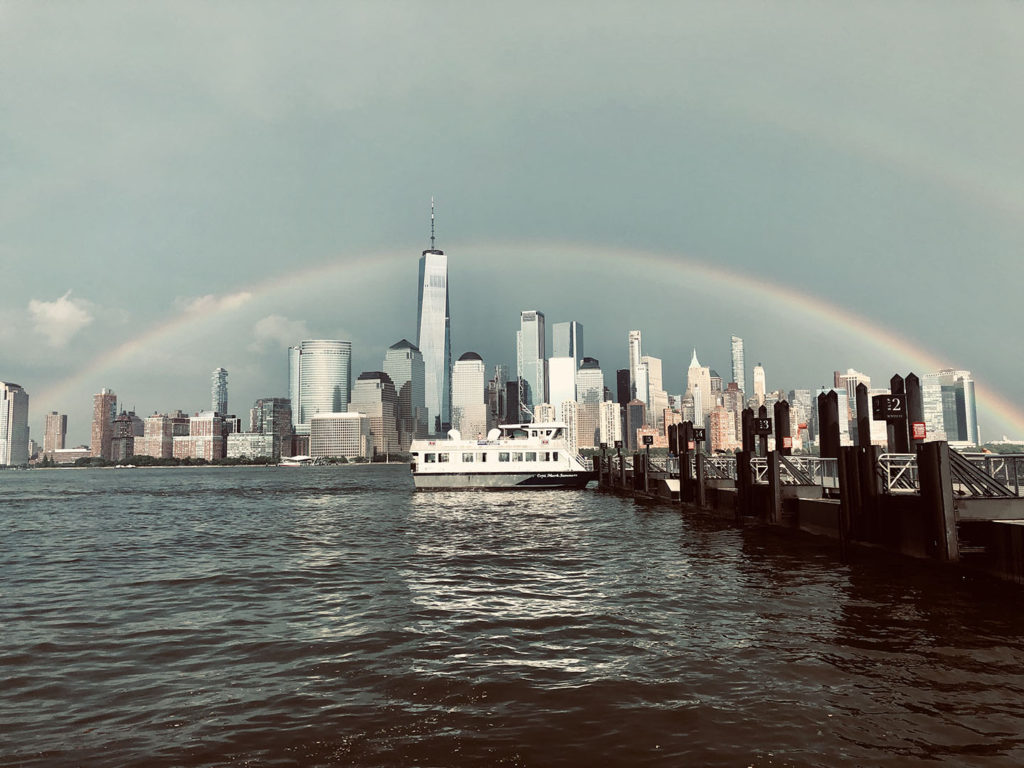
I recently posted a query on my blog for solo female travelers, inviting readers to share a moment that took their breath away. Replies included Lusaka, Gambia; Denali National Park in Alaska; Angelokastro, Corfu; the Basilica of San Francesco in Assisi; a first view of the Grand Canyon….all inspiring, all treasured memories.
And there I was, checking responses on my iPhone about world travel while sitting on a bench in the shade on the banks of the Morris Canal in beautiful downtown Jersey City. It suddenly hit me: why go anywhere at all?
Heaven in a Crowded City
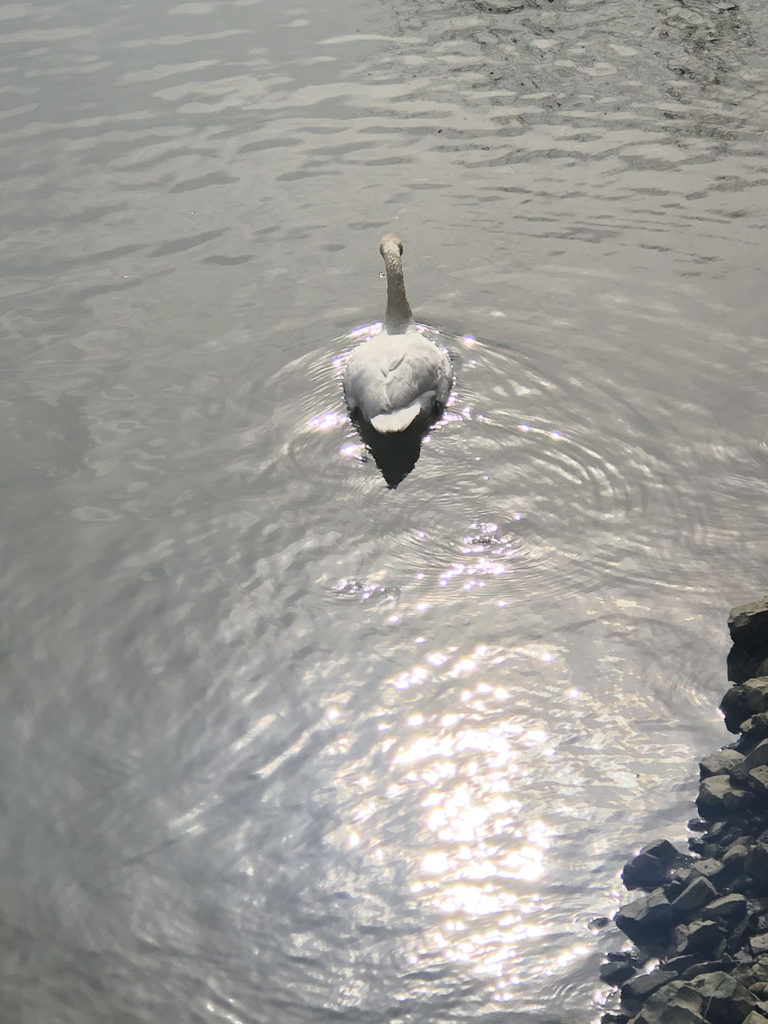
Top: Lower Manhattan after a storm.
The view from the walkway of the Morris Canal is among the best in the world: the World Trade Center glows in the sun (and I remember the two absent towers every single day), the swans paddle along the canal, the sailboats are buffeted by the breezes. I come here almost every day—at least once and often twice—to see those sights and others, including the giant orange Staten Island ferry in the distance, plodding its way back and forth; the Statue of Liberty awaiting the daily crowds rushing from the boats; and Ellis Island, where my mother entered this country in 1919. I can see all the way to the Brooklyn waterfront on one side of the Hudson to Cape Liberty Cruise Port in Bayonne.
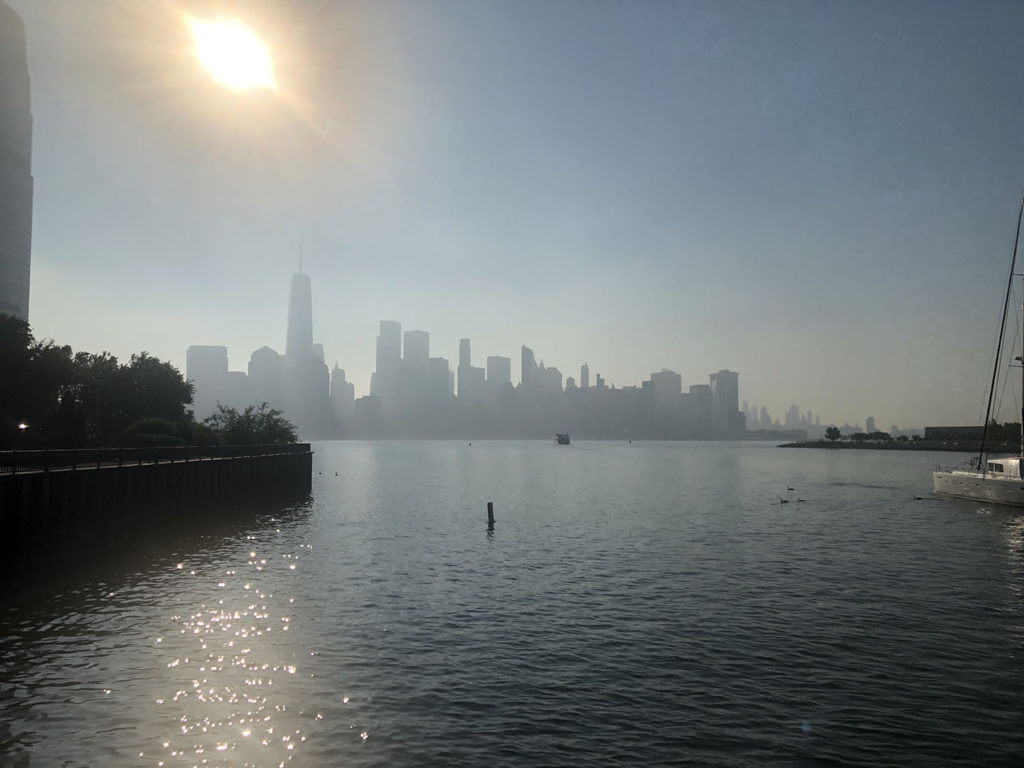
Who knew that Jersey City was so beautiful?
The Liberty Landing Marina is an active 520-slip marina located on the Hudson River across from the lower tip of Manhattan. Filled with yachts, sailboats, motorboats, and jet-skis, the marina is also lined with several restaurants and bars that bring tourists and city folks all summer long. In fact, many are discovering that places to stay in downtown Jersey City are less expensive, larger, and only require a seven-minute ferry ride to reach New York City. I think that tourists might appreciate the neighborhood as their base for city travel.
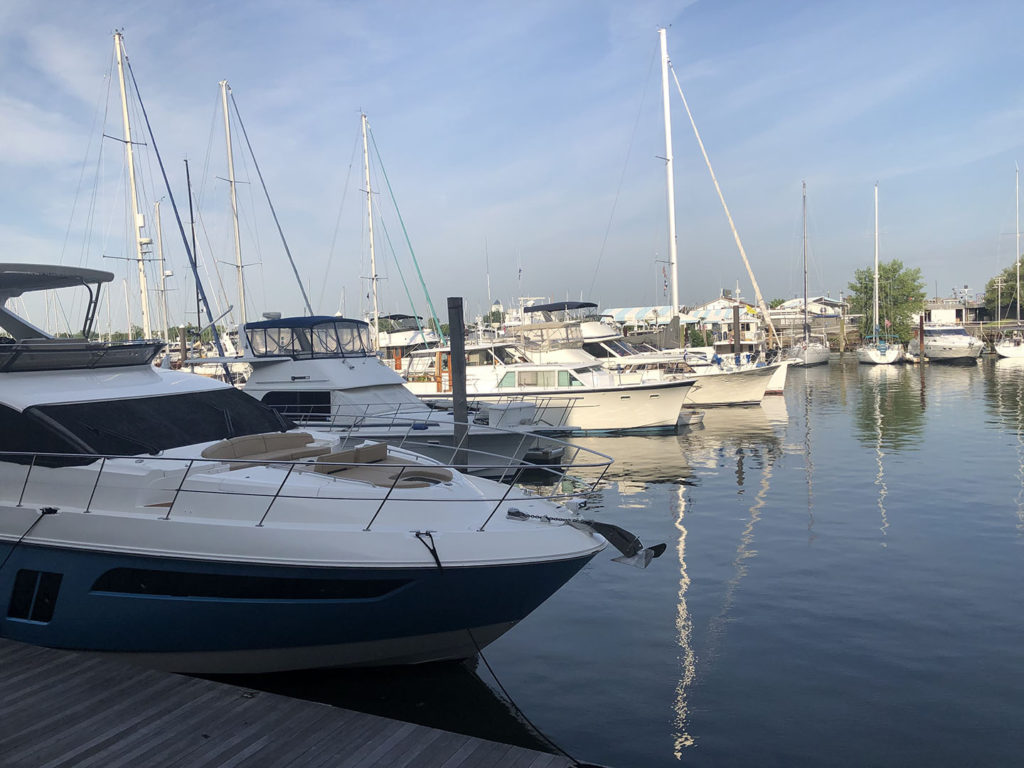
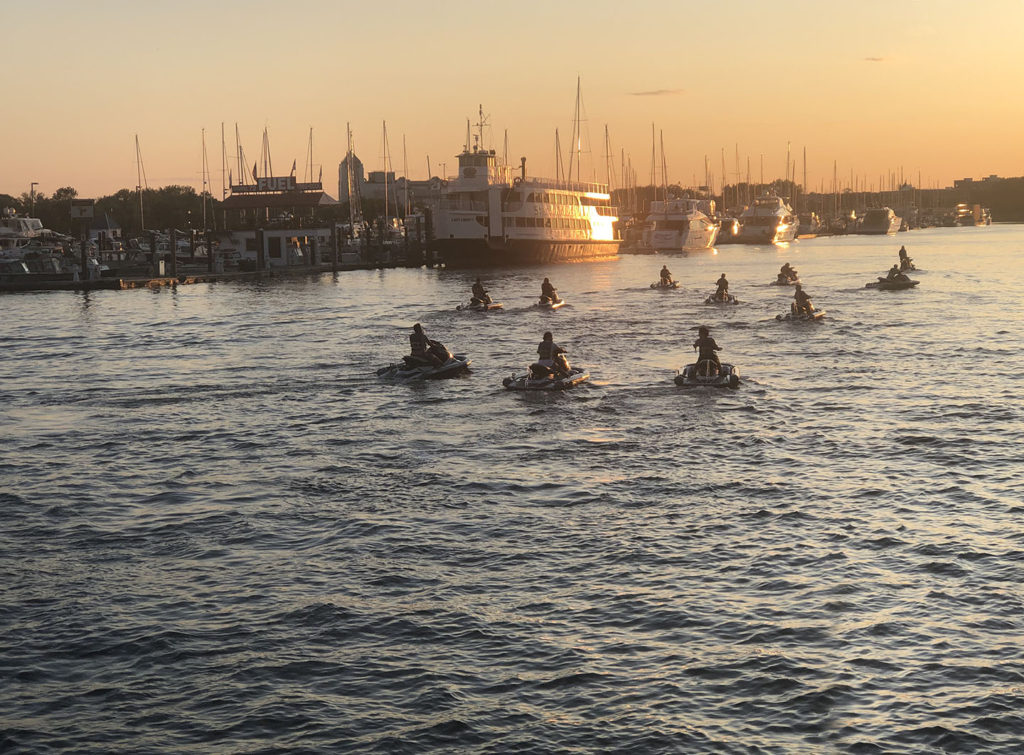
For visitors and residents: the full panoply
For me, though, the Morris Canal is much more than a playground for visitors. It is my vantage point. In the early mornings there are joggers, moms and dads with strollers, dog walkers, and businesspeople on their way to the ferries that will take them to Manhattan. During the day there are retired folks, digital nomads who work at home (or even on a bench on the boardwalk), and more moms/dads/strollers/doggies. In the evenings there are entire families—dogs, babies, parents, and grandparents—and it is then that the full panoply of Jersey City unfolds.
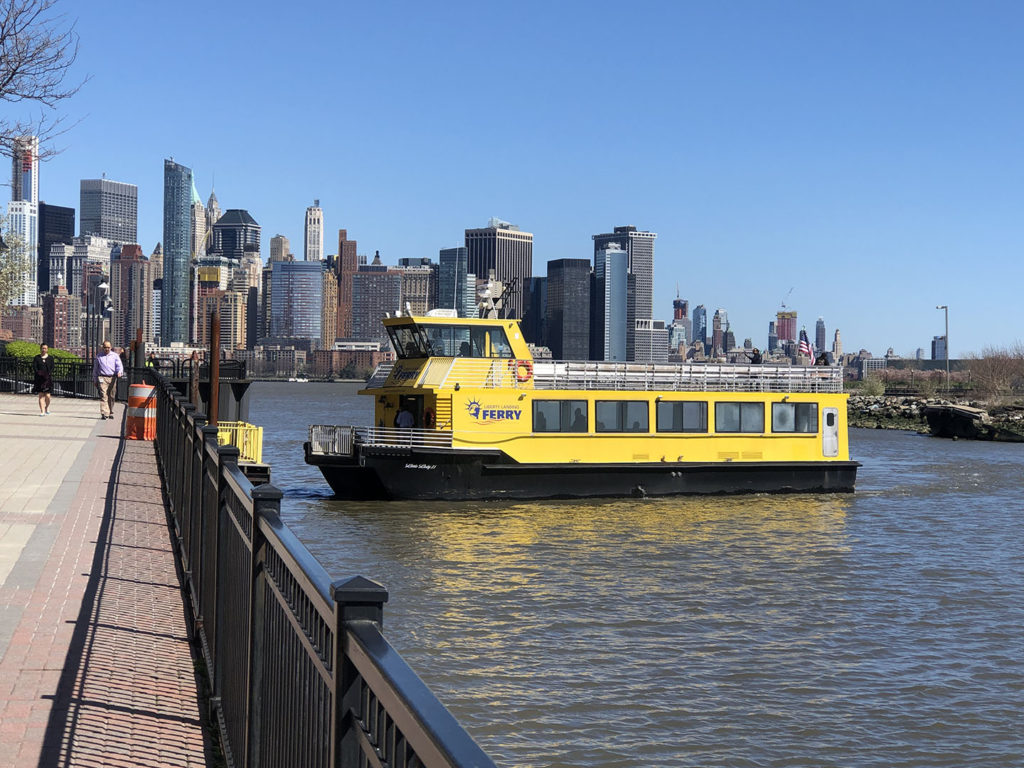
More languages than in a three-week European tour
Indians, Koreans, Chinese, Central and South Americans, Eastern Europeans—young and old—come here from all over the city, the country, and the world. They greet each other’s dogs, do capoeira, wave to boats, chase their children, smoke dope, take photographs, and chat (not all at once).
In the early evening—still light in the summer months—the boats glide into their home slips. The Statue of Liberty cruise ships move slowly, avoiding the path of yellow ferryboats chugging across the canal (about one minute of travel for $2) for the short trip from Warren Street in Jersey City to Liberty State Park. The ferry then travels on to the World Trade Center. People are riding atop those boats, taking photos of lower Manhattan, with the sun’s last rays hitting the windows of the high rises lining the Hudson River.
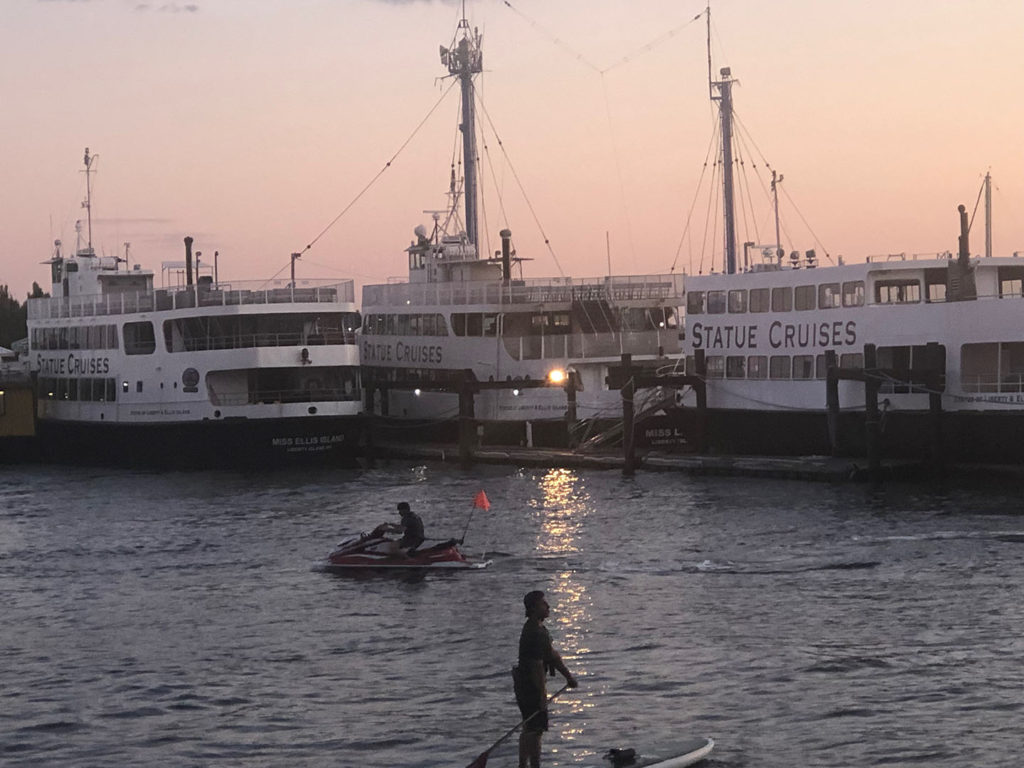
Sitting and watching the clouds change shapes and colors
Last night we saw a tall, corn-rowed man carrying a tiny puppy. He stopped to let children pet it and chatted with their parents. I always greet elderly Indian ladies first so that they feel free to smile at me as they pass with their children and grandchildren. My husband and I sit and watch the clouds change shapes as darkness falls. The season will not last; we will catch those last purple and pink shadows before walking on.
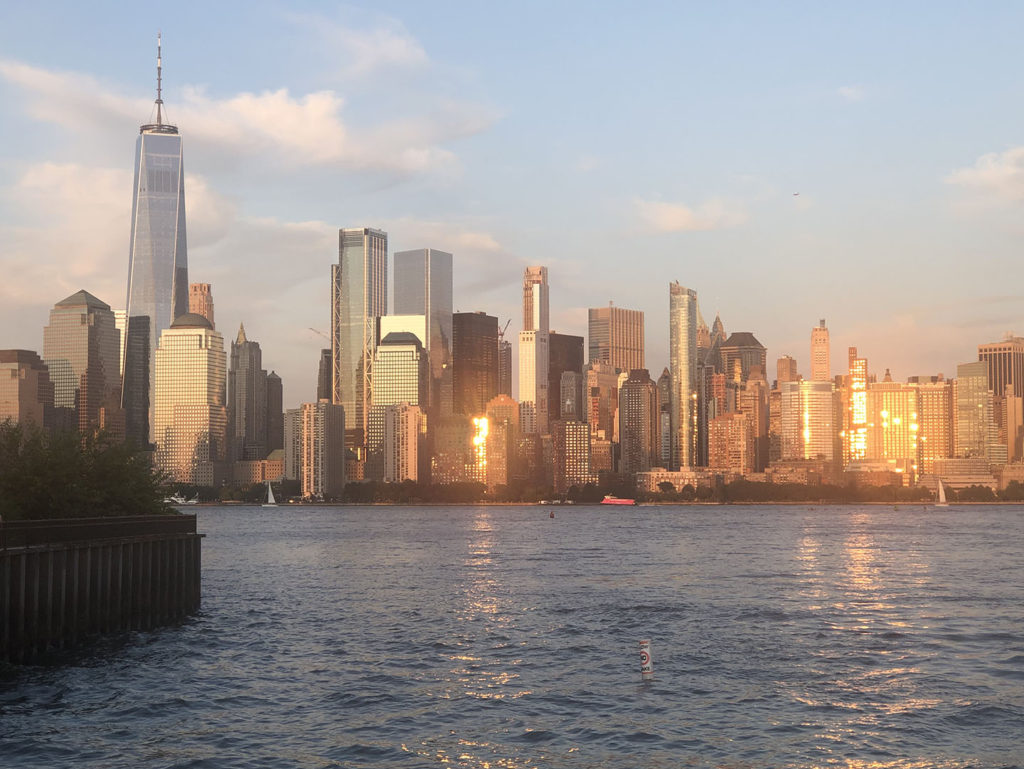
The mighty Morris Canal: an engineering miracle
The boardwalk is a wonderful (and uncrowded) place to watch people. More, it is history. Construction of the canal was completed in 1831. At first, it carried coal from the mines near the Delaware River to Lake Hopatcong and then down to the Hudson River in Jersey City. Over the 90 miles of canal, twenty-three lift locks and inclined planes were built to move boats along. At the time, the system was recognized as an engineering miracle. At first, the growing iron industry needed coal for industry. Then New York City needed coal to be transported in order to heat the homes in the growing city. By the 1860s limestone, sand, lumber, and agricultural products were transported along the canal, as well. The canal became virtually obsolete by 1924, as the railroads became the transportation of choice.
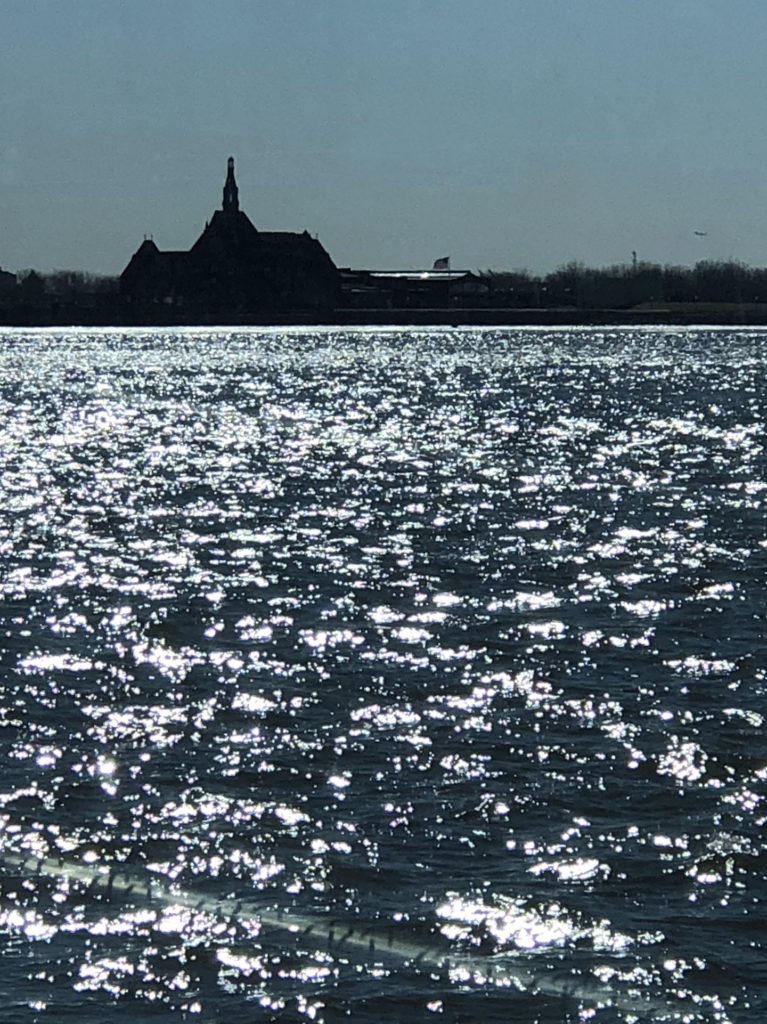
Remnants of a historic past
Devotees of the canal—and environmentalists and historians—still dream of connecting the remnants of the canal to form the Morris Canal Greenway, which will include hiking and biking parks across six New Jersey counties. The end point of the canal, in Jersey City, is already booming.
Bordered by Liberty State Park and Paulus Hook
The Morris Canal empties into the Hudson River and bisects the historic Jersey City district of Paulus Hook and the green swath of Liberty State Park. Liberty State Park is a beautiful 1,212-acre park that opened in 1976 and has remained pristine, due to the work of people like Audrey Zapp, Morris Pessin, and J. Owen Grundy. Nowadays Pessin’s son Sam carries the banner and constantly works to help keep the park free of developers.
The neighborhood on the opposite side of the Canal, Paulus Hook, was the site of the 1779 Battle of Paulus Hook during the Revolutionary War. Many activists and some politicians have also fought to keep the core of the Paulus Hook historic district pristine, as well.
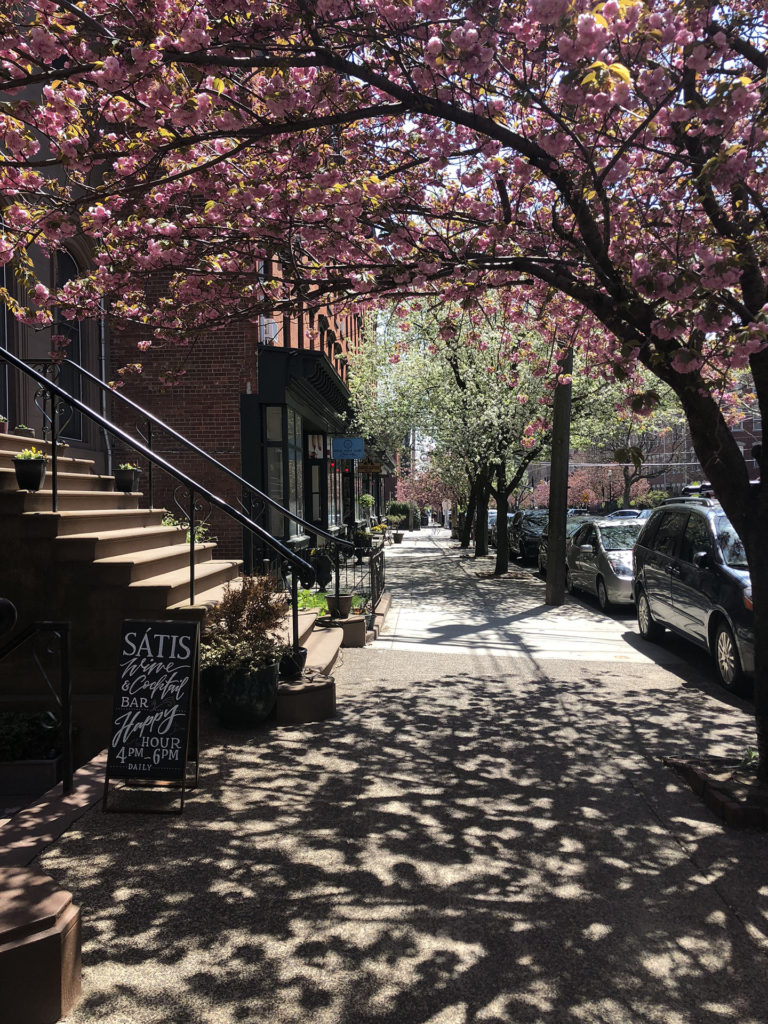
Another reason why the Morris Canal is so meaningful: I will have to leave it
Over the past 15 years, the waterfront area of Jersey City has exploded with office buildings and high-rent apartments—to the dismay of some and a constant source of conflict. Many long-time residents (including us, eventually) have had to leave because of rising property taxes.
What I especially love—and will miss—about the Morris Canal walkway is that it reflects the ranking of Jersey City as among the most diverse places in the United States. In 2019 the city was ranked #1 for linguistic diversity. You can hear it on the boardwalk in languages both familiar and not—Polish, Russian, Chinese, Hindi, Korean, Spanish, Bengali. Everyone is open to smile and chat, everyone is happy to be there, surrounded by water, the breezes, the sun, the changing clouds, the beauty of the bay.
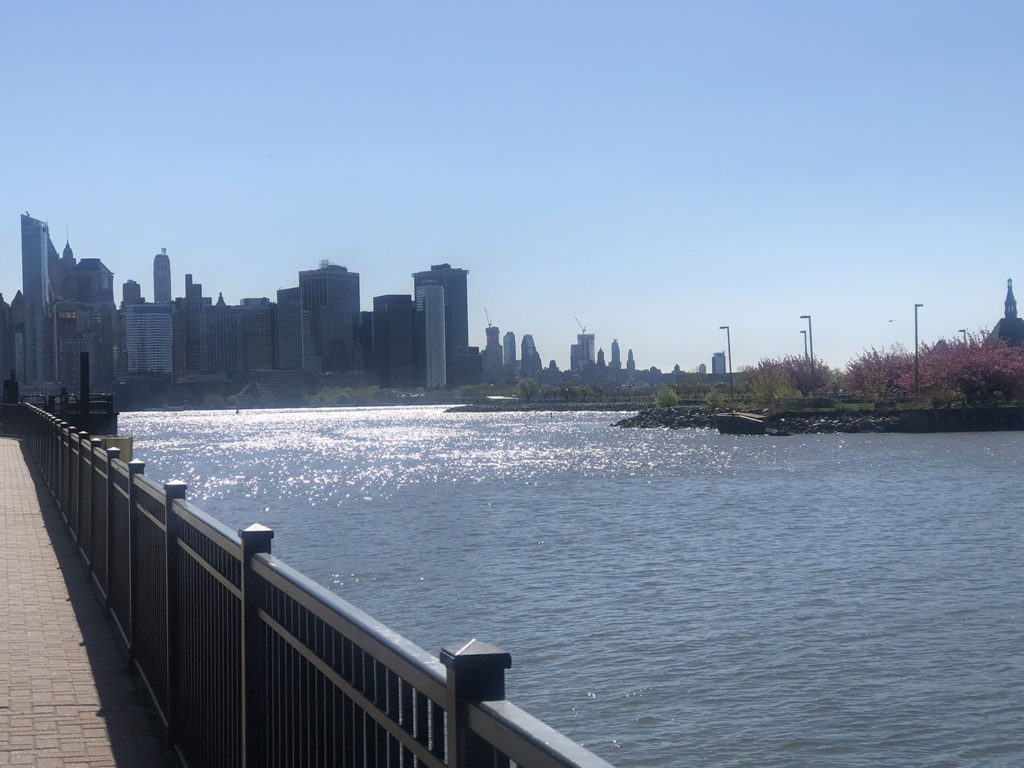
Why travel anywhere at all?
In Jersey City you can see buildings rising from parking lots everywhere you go. Lower Manhattan, across the river, is crisscrossed with construction equipment. But here, the Morris Canal provides a peaceful pause amidst the cacophony of the city. The scale is human here, and I feel the delight of tourists as they stroll by, the relief of working folks as they head home, the happiness of the mutts and purebreds as they gambol along. Do I really need to travel? Always yes, but this place exist deep in my soul while I am out finding other places to wander and other people to meet.
